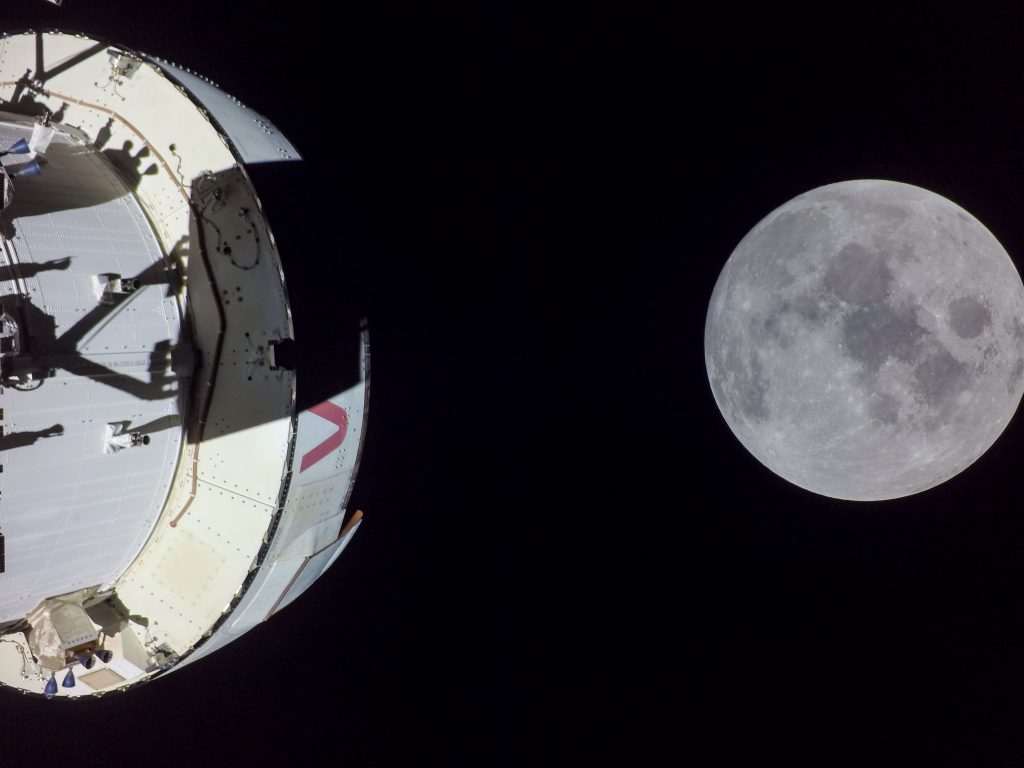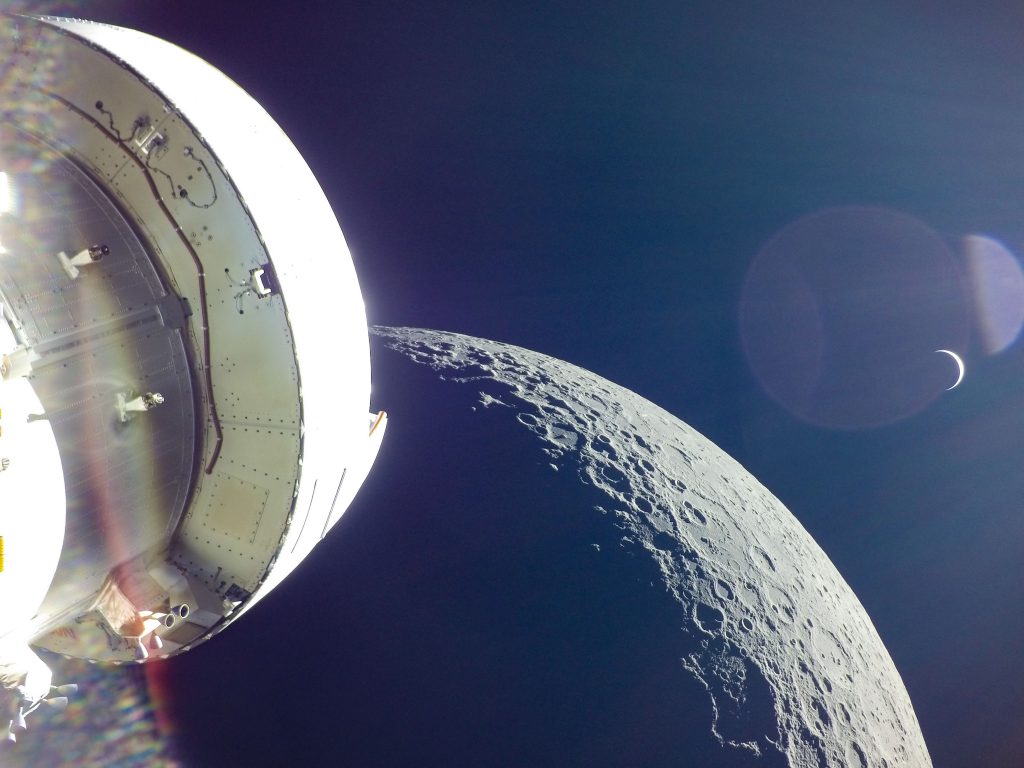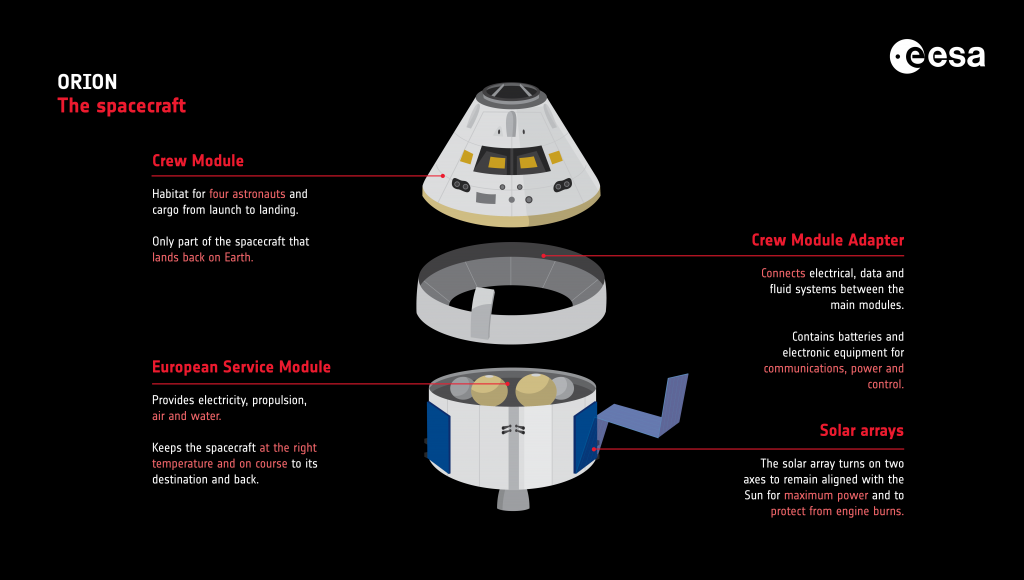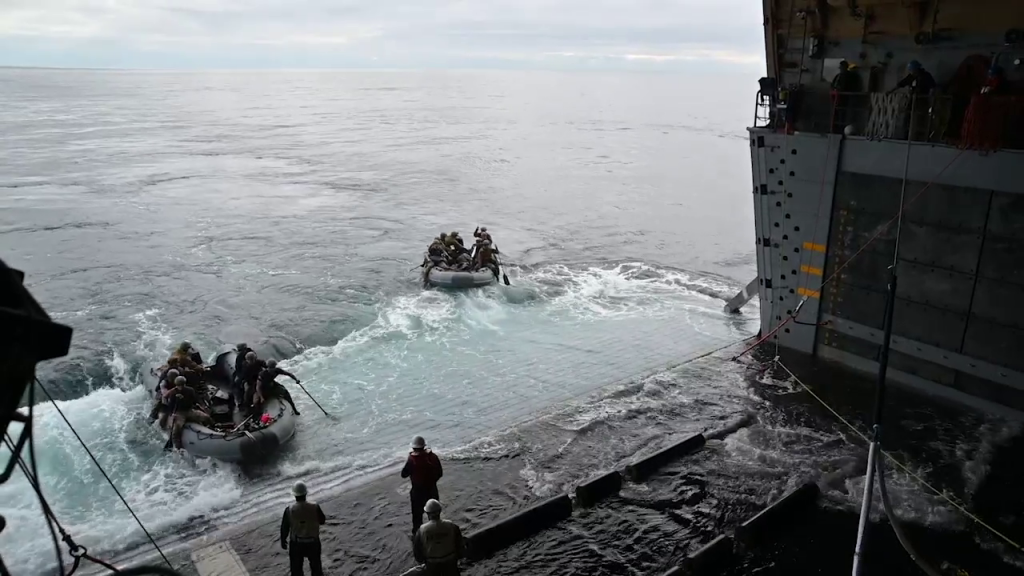On 5 December, flight day 20, the European Service Module completed the return powered flyby burn, putting the Orion spacecraft on course for a 11 December splashdown in the Pacific Ocean, Earth.
Several hours before the lunar flyby, the European Service Module performed a trajectory correction burn at 11:43 CET (10:43 GMT) using the reaction control system thrusters, the third since leaving lunar orbit. The burn lasted 20.1 seconds and changed Orion’s speed by 2.2 km/h (0.62 m/s).

NASA’s Orion spacecraft made its second and final close approach to the Moon at 17:43 CET (16:43 GMT) just before its return powered flyby burn, passing 130 km above the lunar surface.
The burn, which used the European Service Module’s main engine, lasted 3 minutes 27 seconds, and changed the velocity of the spacecraft by about 1054 km/h. It was the final major engine burn of the Artremis I mission.

“Orion is heading home! Today the team achieved another momentous accomplishment, flying Orion just 130 km from the surface of the Moon. The lunar flyby enabled the spacecraft to harness the Moon’s gravity and slingshot it back toward Earth for splashdown,” said NASA administrator Bill Nelson. “When Orion reenters Earth’s atmosphere in just a few days, it will come back hotter and faster than ever before – the ultimate test before we put astronauts on board. Next up, reentry!”
Sadly, but necessarily, the European Service Module’s contribution to Artemis ends 40 minutes before splashdown. Together with the Crew Module Adapter these elements of the Orion spacecraft will detach from the Crew Module and burn up harmlessly in the atmosphere, leaving Orion on its own for the last crucial minutes to splashdown.

In a NASA briefing after the Return Powered Flyby, NASA’s Orion Deputy Program Manager Debbie Korth said: “Thanks to our European partner for the provision of the service module, the whole propulsion is designed by ESA and built by Airbus for its European Service Module. It’s been great and we have added extra objectives… it has just been performing really well and because we have had so few anomalies we have been performing more tests to expand that envelope.”
Go for splashdown
The mission management team convened and agreed to launch the splashdown recovery teams. As soon as Orion splashes down, a team of divers, engineers, and technicians will depart a ship on small boats and arrive at the capsule. Once there, they will secure it and prepare to tow it into the back of the ship, known as the well deck. The divers will attach a cable to pull the spacecraft into the ship, called the winch line, and up to four additional tending lines to attach points on the spacecraft. The winch will pull Orion into a cradle inside the ship’s well deck and the other lines will control the motion of the spacecraft. Once Orion is positioned above the cradle assembly, the well deck will be drained and Orion will be secured on the cradle.

Orion has used approximately 3651 kg of propellant during Artemis I, which is 82 kg less than expected before launch.
As of 00:29 CET on 6 December (23:29 GMT 5 December) Orion was traveling 393 692 km from Earth and 26 685 km from the Moon, cruising at 1075 km/h.
Images are available on Flickr. When bandwidth allows, views of the mission will be available in real-time via video stream.

 Automated Transfer Vehicle page
Automated Transfer Vehicle page ATV blog archive
ATV blog archive
 NASA Orion page
NASA Orion page NASA Artemis
NASA Artemis Airbus Orion page
Airbus Orion page
Discussion: 4 comments
Wonderbar comrades alles klar.
great work ,I couldn’t any better 👏.
Hello Julien
Sorry .. another fuel consumption issue 🙂
on Day 17 .. (when it was out of SOI) the used propellant was 3601 kg.
on D19 .. a correction burn using the auxiliary thruster engines
on D19 .. a correction burn using the RCS thrusters
on Day 20 .. a 3:27 of firing the OMS-E
the used propellant was 3651 kg !!.
thank in advance for the clarification.
Hello Ashraf, thanks for keeping me sharp 🙂 So we asked the propulsion people and the numbers are correct except that the day 20 number was from before the return powered flyby. The OMS-E engine used an extra 1800 kg on that day, the largest burn for the Artemis mission!